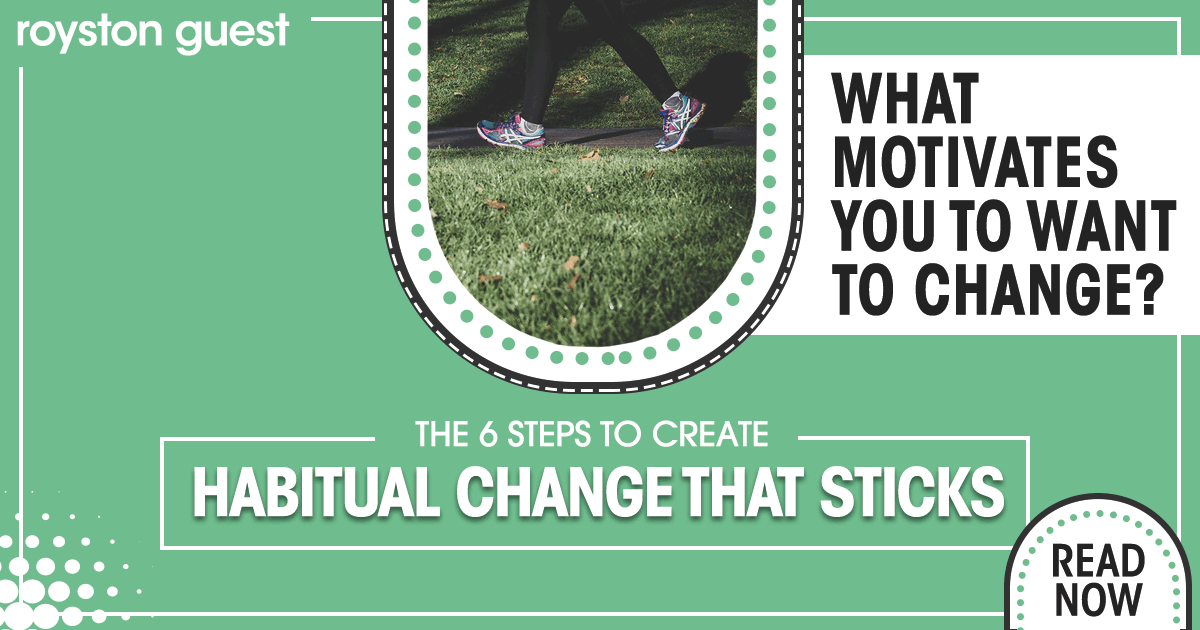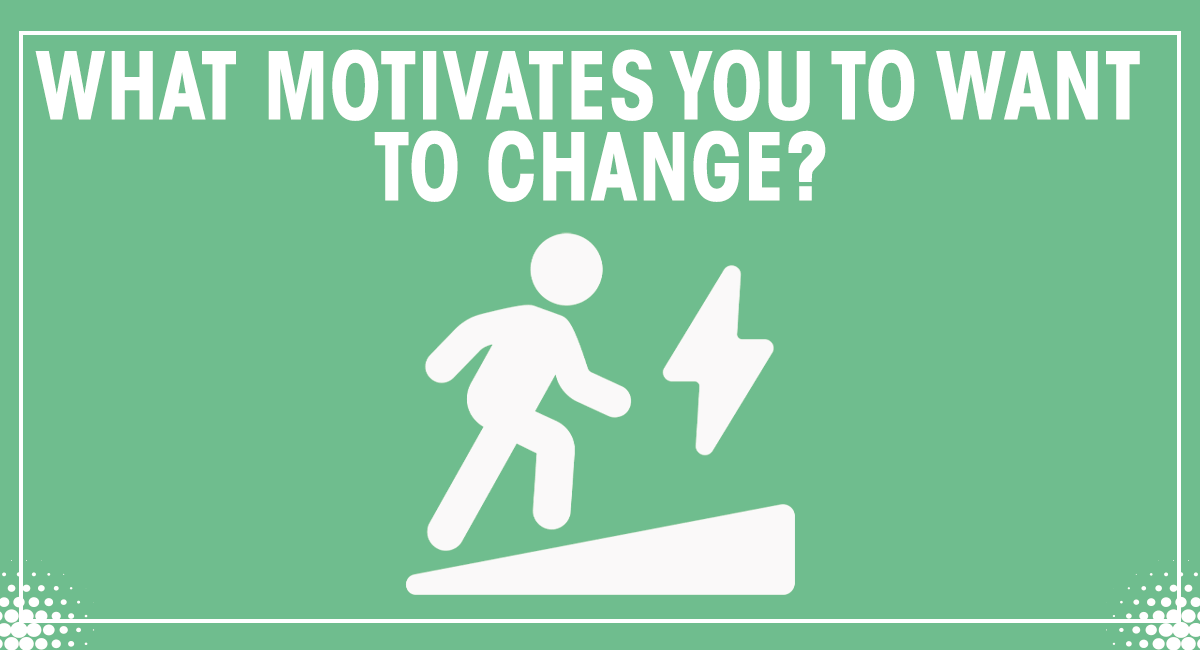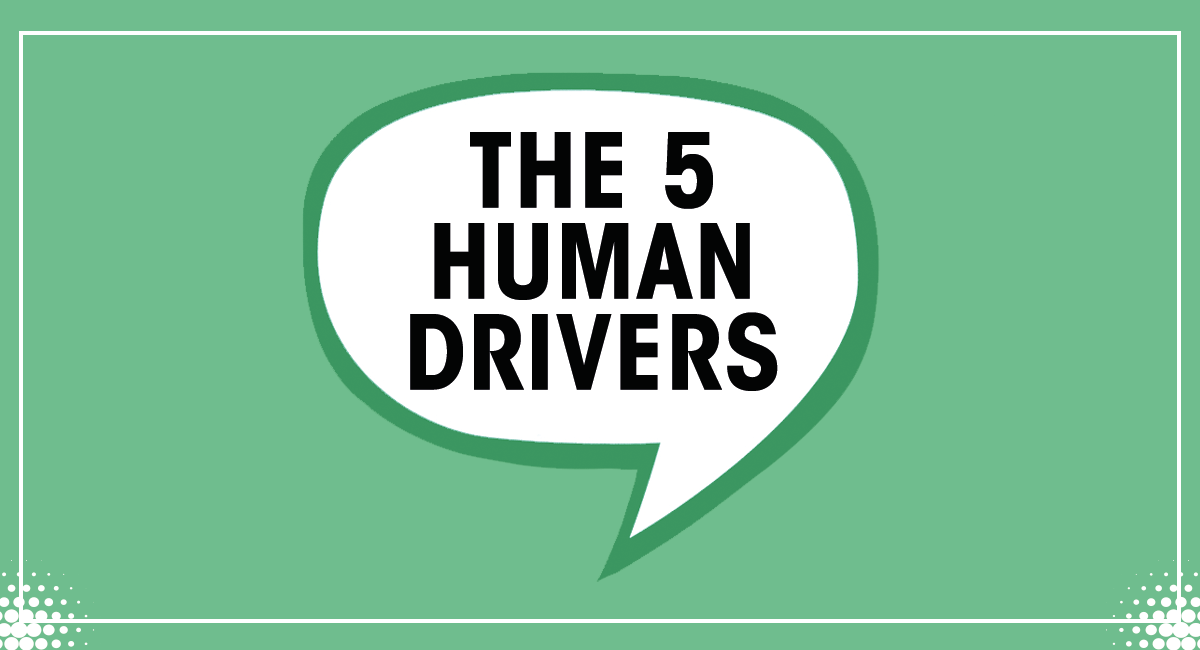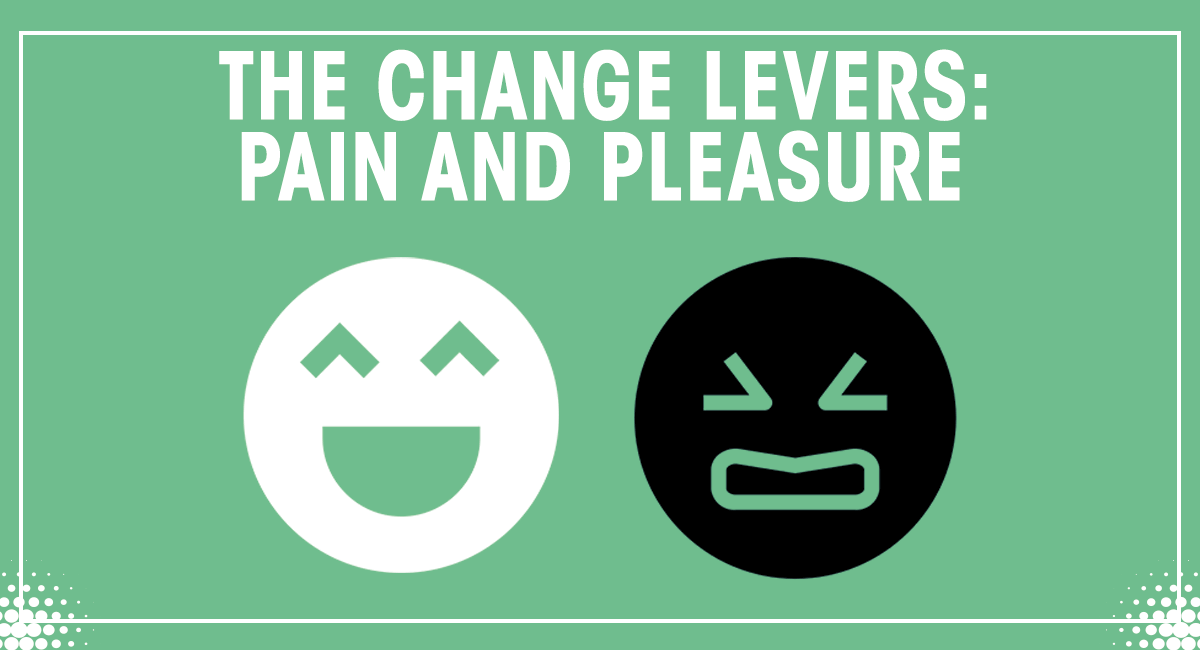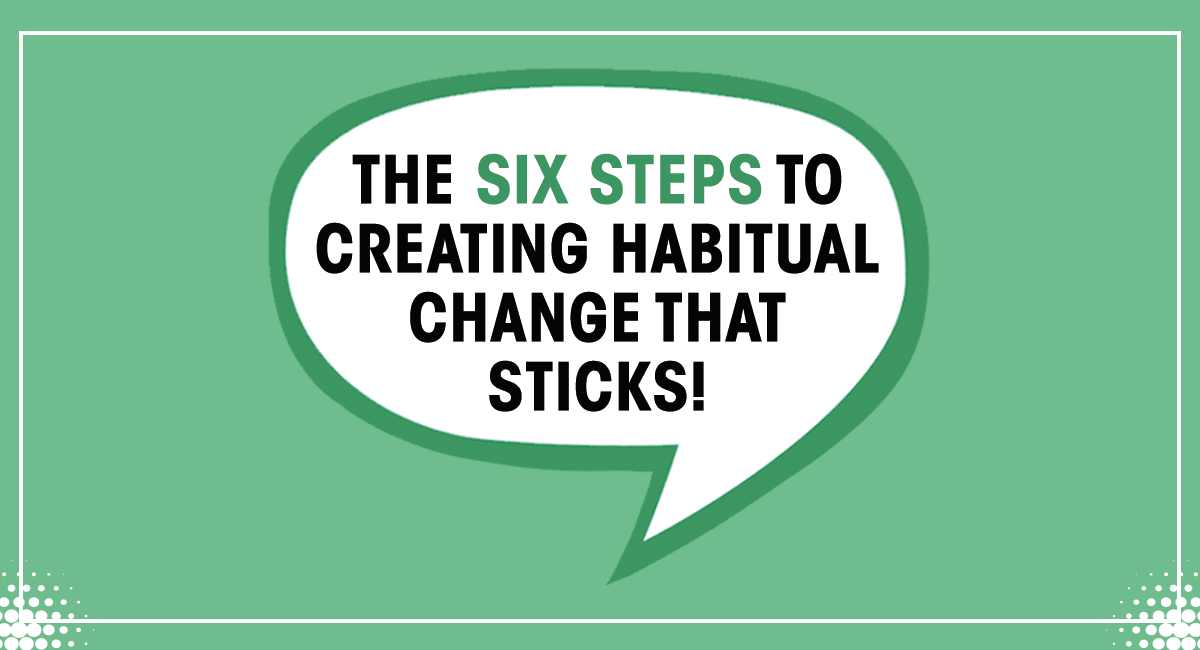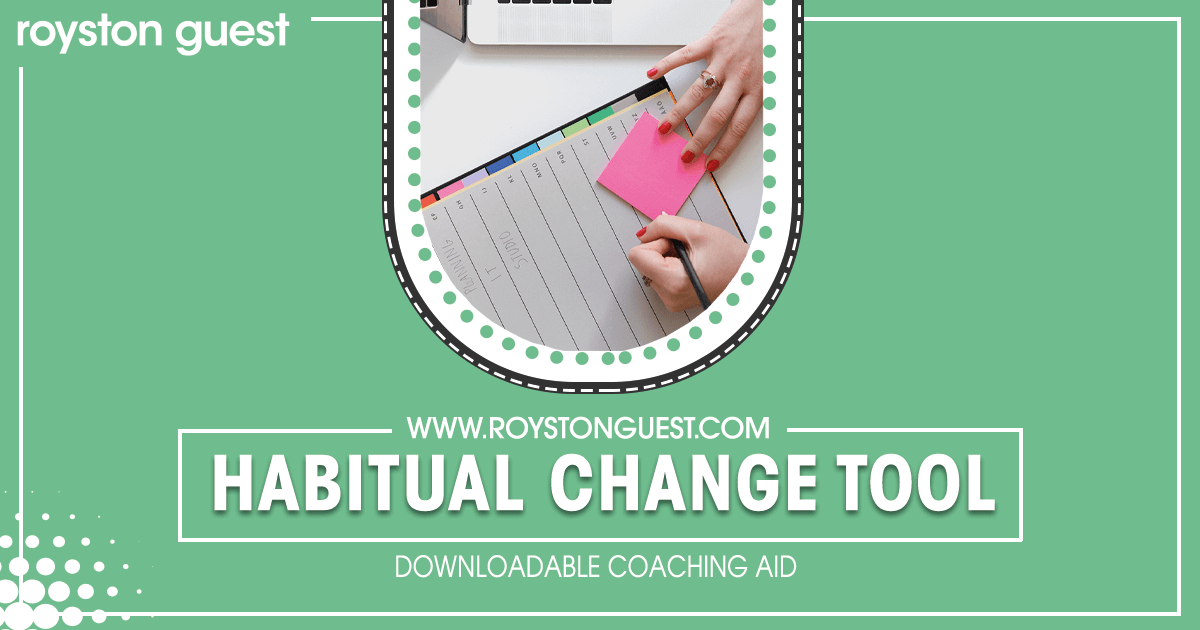HOW WE’RE WIRED AS HUMAN BEINGS, THE FIVE HUMAN DRIVERS
More often than not, you can only make a change and become the person you want to be if you have a strong understanding of yourself. You have to do the inner work first.
And that inside job is about understanding what makes you tick, and more importantly, understanding the five interlocking human drivers. There’ll be aspects of your life where you can achieve winning results by allowing a particular driver to come to the fore, but there’ll be others which, letting a driver dominate your thinking and actions, could derail your efforts.
Do you know what makes you tick?
Driver 1: Certainty
Certainty is the foundational human driver, which has its origins way back in the Stone Age when human beings had a survival need for certainty around shelter, food and heat; an individual’s three most necessities.
Wind forward to today and our needs haven’t changed: put food on the table, pay the mortgage and bills to keep the roof over our heads, and provide for our families and ourselves.
The need for certainty can lead you to make decisions, which are well thought through leading to predictable outcomes.
But on the other, it can also lead to procrastination, analysis paralysis or attempts to control things and people too tightly.
Take a moment and think about this.
What areas of your life do you feel you have a foundational need for certainty?
Is it a stable home or relationship?
A secure job?
A particular amount of money in the bank?
Is it a combination of these or perhaps other triggers which are driving your need for certainty?
If you need certainty, be careful that this driver does not translate into fear of uncertainty and impacts your ability to make a change. Because change by its very nature is uncertain.
Driver 2: Adventure
Picture this scenario: you know precisely what you were going to be doing every minute, every hour, every day, month and year from this day forth for the rest of your life. How would that make you feel? Bored? Comfortable?
Most of us have a need for adventure, mystery, the unknown and surprise. That is how we know we are alive. However, adventure can change from being a positive enabler to something potentially unsettling, because adventure is, by definition, uncertain.
So what happens when the pendulum swings from adventure to uncertainty? Adventure may seem fun and exciting, but when we frame it as uncertainty, it becomes the opposite of driver one.
For many, the very idea of uncertainty is enough to freak them out, slamming the brakes on their need and desire for adventure. At this point, they remain between a rock and a hard place. They want adventure, but the uncertainty of it becomes too much, and they end up doing nothing. Dreaming of the adventures they would like to take, but too afraid of the unknown to take the next step.
The reality is that change is one of the only real certainties in the world and the quality of your life is in direct proportion to the amount of uncertainty, adventure and change you can comfortably live with.
Driver 3: Significance
We all long for significance. We all want to matter, to be thought of as relevant, useful and valuable.
We can be significant to our colleagues and bosses, to our friends who appreciate our support and care, and to our families who love us unconditionally and rely upon us as a critical part of their lives.
You may feel a high degree of significance when others praise you for your capabilities and achievements. Or you may feel significant when you know you’ve achieved something great regardless of the external validation you may or may not receive. The same need met – just through different sources.
A feeling of significance can drive you to achieve amazing things: to be a loving parent and partner, valuable friend, team leader, to want to write books, build companies or even run countries.
Ask yourself, how strong is your need for significance, and what is its source?
Driver 4: Belonging
They say no person is an island and in today’s world, being aware of this is perhaps more important than ever. We’re more connected than we have ever been, yet human connections – real, genuine social relationships are becoming harder than ever to make. In our need to belong, we don’t necessarily seek to lead but to be part of a pack, to be a welcome member of something much larger than ourselves.
In what areas of your life do you need to feel like you belong? What are the places, or groups of people with whom you feel you belong? If this is an active driver for you, this, in turn, will generate a dynamic driver for change.
Driver 5: Growth
Few things feel worse than a feeling you’re being left behind. And few things feel better than a feeling that you’re improving, advancing, getting better at something and increasing your value to your family, your work, your community. Growth is a crucial driver for us all and a key driver for change.
Nothing on this earth is standing still. It’s either growing, or it’s dying. No matter if it’s a tree or a human being. If you’re not growing, you will be left behind, and nobody wants to be left behind. Of course, the opposite of growth is in a rut, and there is nothing more soul-destroying than that.
Once you understand the five human drivers, you can start to think about their importance, how they apply to you, and their influence on your thinking subsequent actions and motivation to change. It will enable you to unlock your motivation to change.
Let me share some scenarios so you can start to see and feel how the five interlocking human drivers might play out. What you begin to identify with will reveal how you prioritise the drivers in your own life.
How the human drivers can play out
Scenario 1: A restructure is announced at work
Imagine you’re an employee and one Monday morning a restructure is announced that puts your job at risk. How would that make you feel? How would your need for certainty be triggered? Would it be an adventure for you, a challenge to rise to? Or would you be so full of uncertainty that you would panic?
- What would happen to your feeling of significance and your ability to contribute? Would you see it as an opportunity to shine and prove your worth, or would you feel expendable and unimportant?
- What about your sense of belonging? Would you feel your affiliation with the organisation from that point on was broken, even if you kept your job, or would you be able to absorb the disruption and come back even stronger?
- What does it do for your need for growth that someone else could so easily take away your pathway to growth? Or do you see it as yet another opportunity to grow?
Scenario 2: Your house is flooded
Imagine that your home is in an area with a high risk of flooding. And the worst happens: your house is flooded, and you have to move out for 12 months while they repair and renovate it.
- How is your need for certainty affected? If it’s happened once, could it happen again? Could you live with that level of uncertainty every time there was a prolonged period of heavy rainfall?
- What does it do for your need for significance and contribution?
- What about belonging? How is the idea of ‘My home is my castle’ affected by this scenario?
Think about these questions one by one. Your responses will tell you a lot about your priorities and how the drivers play out for you in different scenarios.
Scenario 3: A friend splits from their partner
Imagine that a friend comes to you and she is broken. After ten years of marriage, her partner has suddenly walked out, saying he wants a divorce. You have two roles: you need to be a shoulder to cry on but also a counsellor to help her rationalise what has happened.
Now think about how you would present the five interlocking human drivers to your friend as you try to see the world through their lens:
- What has just happened to their base need for certainty?
- What has happened to their need for adventure? Is it overridden by uncertainty, positively or negatively?
- What has happened to their sense of significance?
- What about their sense of belonging?
Remember there isn’t a right or a wrong here; only a right and a wrong for YOU. When you go about your daily activities, listen to the voice in your head as you face different scenarios and situations and start to think about how those five interlocking human drivers play out. The voices you hear and the silent conversations taking place are triggers for your subsequent behaviour actions and motivations to change.
THE CHANGE LEVERS: PAIN AND PLEASURE
To commit to making a change, and to ensure that change is lasting, the commitment has to be overwhelming. It has to overcome the forces of inertia that hold your old behaviours and beliefs in place.
The catalyst for change is never a matter of ability; it’s a matter of motivation. What motivates people to do what they do is based on one of two things: the avoidance of pain or the gaining of pleasure.
If you ever find yourself in a ‘no man’s land’ where you can feel yourself drifting, it’s likely to be for one of two reasons. Either you haven’t created a picture of the future, driven by a compelling reason and purpose that are going to pull you towards it (pleasure), or you haven’t experienced enough pain to give you the impetus you need to take action (pain).
Let me share two examples:
GIVING UP SMOKING
If you filled a room with a hundred ex-smokers and asked them why they gave up smoking, what reasons would they give?
- ‘It’s too expensive.’
- ‘I fell pregnant, so I had to give up.’
- ‘I exercised for the first time in ages and was embarrassed about how unfit I was and how I couldn’t catch my breath.’
- ‘My child ran to me one day crying, saying “Daddy, I don’t want you to die”, because they had seen an advertisement stating that smoking kills.’
- ‘I had a family member die of lung cancer.’
- ‘I have recently been unwell, and smoking made me feel worse.’
Do they sound like pain-driven reasons or pleasure-driven reasons? In nearly every case, when people give up smoking, it will be a pain-driven reason first.
GOING TO THE GYM
Why do people visit the gym at the beginning of January? If you are an active gym user, you’ll probably notice how the gym is suddenly full at the beginning of the year as people act on a resolution to get into shape. After Christmas, most people feel that they’ve overindulged over the previous month (if not for longer) and feel overweight and unfit, so they decide to do something about it. They are responding to the need to avoid further pain.
Most people quickly give up, and only a few see their resolution through. The pain isn’t a strong enough lever to keep them focused and, at the point they decide to give up; they haven’t quite experienced the pleasure lever yet. They haven’t hit the tipping point.
But those who stay the distance tend to experience something else. While they are also trying to avoid pain at first, as time goes by they begin to notice that they are stronger and fitter. Their friends begin to say things like ‘You’re looking great!’ ‘You’ve lost weight!’ ‘That shirt looks amazing on you …’ Suddenly the lever of gaining pleasure has taken over, and their motivation steps up to another whole level.
Which is the most significant lever for most people: pain or pleasure? Most people make decisions based first on the avoidance of pain (their primary driver), not the gaining of pleasure (their secondary driver). Pain is the catalyst for action, but pleasure is the continuation of action!
When someone is in pain, it is our natural human instinct to try to help take that pain away. Pain is usually considered bad. But as a human motivator – as a driver of change – pain can be a positive driver of change, delivering positive results.
SIX STEPS TO CREATING HABITUAL CHANGE THAT STICKS
So you understand what makes you tick and what your motivational drivers are. You appreciate your change lever – pain or pleasure, so now it’s about creating habitual change that sticks.
Understand your WHY
Let me share with you the WHY Triangle; the WHY being at the base, the WHAT on the left side and the HOW on the right. We tend to spend most of our time in the ‘what’ we are doing and the ‘how’ we are doing it but very little time in the ‘why’ we are doing it.
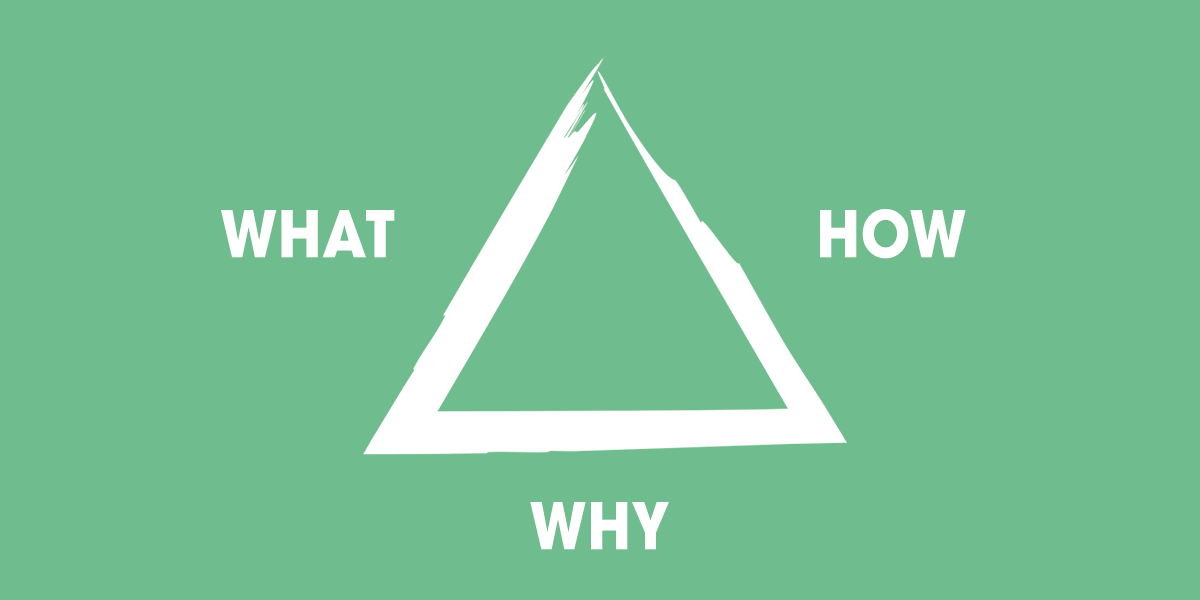
The ‘why’ is the foundation of the entire process. I believe one of the challenges when we get into adult life, is that life conditions us to stop asking the why questions, we lose that childlike instinct. Perhaps now is the time to time to get that back by asking more why questions:
Why do I want to get fit?
Why do I want to give up smoking?
Why do I want a new job?
Why do I want to travel?
It’s all about the WIFM factor – what’s in it for me?
Emotion vs logic
Now imagine the triangle again, adding a horizontal line two-thirds of the way up with the word logic above the line and the word emotion below the line.
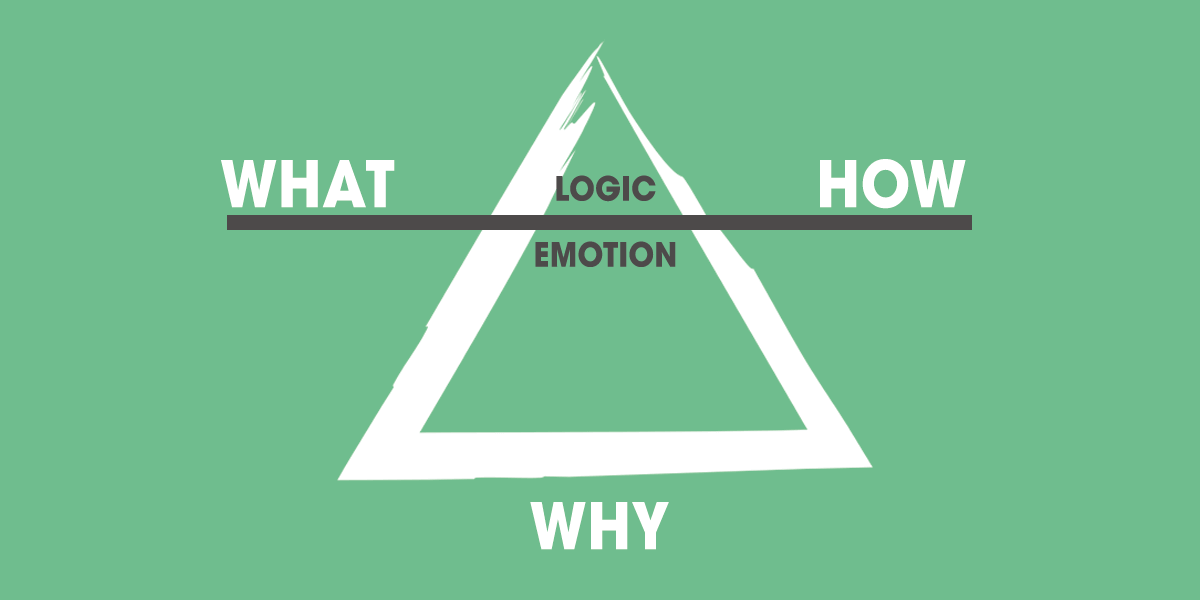
You see, emotion is far more important than logic. When we want to make a change, we must dig deep and connect with our emotions first.
Create your vision
The next step is to create a vision as to what your life will look like after the change. Your vision should be expressed in such a way that it creates a positive picture of what the difference will look like.
Let me share with you an example from a client I was coaching who had the opportunity to participate in a Mount Kilimanjaro charity climb but was concerned about the preparation needed and her ability to do the climb.
I asked her to close her eyes and imagine standing at the top of Mount Kilimanjaro, having just completed the climb.
- What did it look like?
- What could she see?
- What did it feel like?
- What sounds could she hear?
- What could she smell
- What could she taste?
This is how she answered the questions and how we shaped her vision and goal:
“It’s 27 October 2016 at 06h34, and I have just finished a climb to the top of Mount Kilimanjaro. I am standing at the top of the mountain looking out as far as the eye can see, as the sun rises and the night changes to day. The wind is gently whistling through my ears, but otherwise, the silence is breath-taking.
I feel fabulous as this was one of my biggest goals, to stretch my comfort zone even though I am not a natural athlete. The smell of the air is so fresh and clean, and I can almost taste the champagne, which we’ll be cracking open to celebrate the achievement of our goal. I feel alive and so proud of myself for achieving this goal. It was challenging, but I feel like I’ve grown in confidence and belief about what I can and can’t do in my life.”
Now that she had a compelling vision and a specific goal, she found a picture of the summit of Mount Kilimanjaro, superimposed herself on to it with the words to her goal. She put it up on her wall like a visioning board so that she could look at it every day.
The visioning board and goal were her anchor. If she ever felt her enthusiasm waning on a dark, cold, wet morning, a quick peek of herself standing on the top of the mountain was enough to reconnect her with her ‘why’.
Rally Support
Step three is about getting people behind you. It’s about having a support network, words of encouragement or even a kick up the backside. Share the change you want to make in your life and your reasons why. Help those in your support network understand what this means to you and what help you need from them.
Having an accountability buddy will keep you motivated to create that lasting habitual change as while you won’t want to let yourself down, you usually don’t want to let the other person down even more.
Map your transition
To get where you want to be (future stage), you need to know where you currently are (current state) and the steps you’re going to take in between. Let me use a simple analogy to bring this to life.
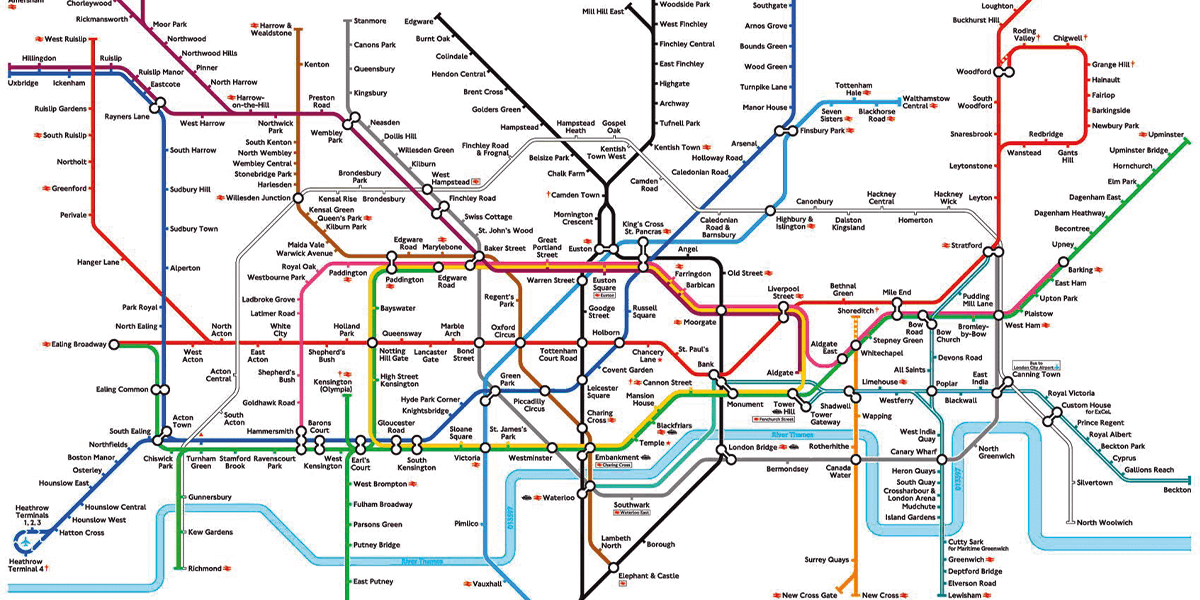
You’re on the London underground at South Kensington (your current state reality), and you want to get to Kings Cross (your desired end state).
You have several different routes and options to get you to Kings Cross, so your first decision is, which is the best route for me? Factors at play here could include time and speed of arrival, convenience (number of changes), preferred route, opinions of others.
You decide to take the Piccadilly line, a direct line with eight stops to Kings Cross. While on the tube you continually check each stop as you come into the station (it’s a habit we all do it) and listen to the conductor as he or she announces the next station. These check-ins reassure you that you are on the right train to Kings Cross, and happily, with no surprises, you arrive at your destination.
Know your beginning, know your end, know and map out your route and create your checks and measures to check your progress along the way.
Make the change
This comes down to making the change. If it’s to stop smoking – quit today. If it’s to get fit – exercise today. Often the starting point is always the hardest. Start today.
Sustain the gain
Making the change is the starting point; the challenge now is to keep driving forward. Not giving up when it gets hard. Not losing focus and your motivation starts to dwindle. When any of these things happen, which they will, revisit your human drivers, your change levers and your WHY.

